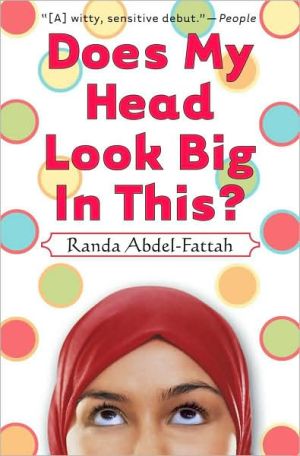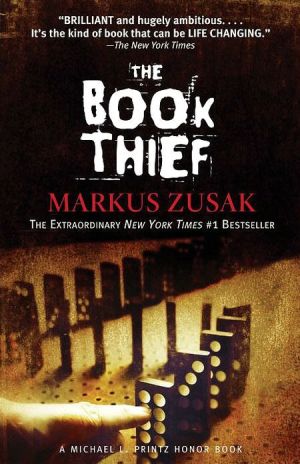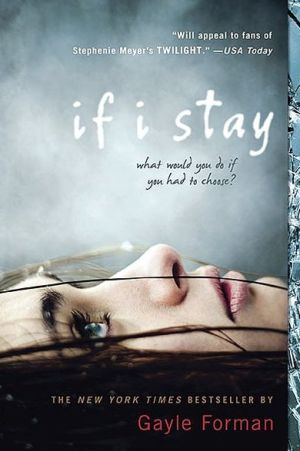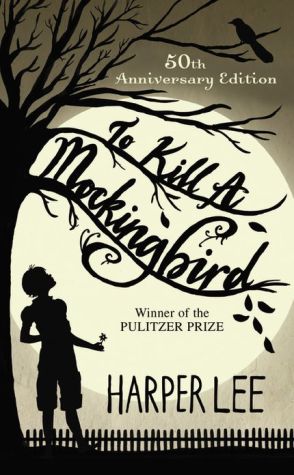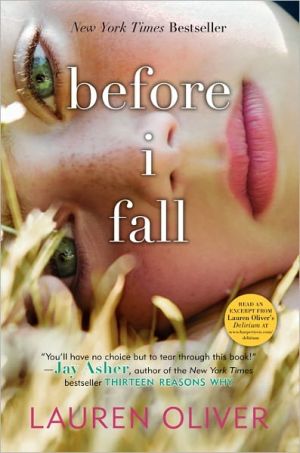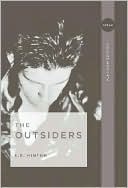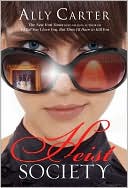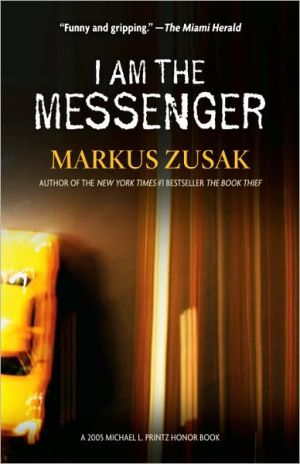Does My Head Look Big in This?
When sixteen-year-old Amal decides to wear the hijab full-time, her entire world changes, all because of a piece of cloth...\ Sixteen-year-old Amal makes the decision to start wearing the hijab full-time and everyone has a reaction. Her parents, her teachers, her friends, people on the street. But she stands by her decision to embrace her faith and all that it is, even if it does make her a little different from everyone else.\ Can she handle the taunts of "towel head," the prejudice of her...
Search in google:
Sixteen-year-old Amal makes the decision to start wearing the hijab full-time and everyone has a reaction. Her parents, her teachers, her friends, people on the street. But she stands by her decision to embrace her faith and all that it is, even if it does make her a little different from everyone else. Can she handle the taunts of "towel head," the prejudice of her classmates, and still attract the cutest boy in school? Brilliantly funny and poignant, Randa Abdel-Fattah's debut novel will strike a chord in all teenage readers, no matter what their beliefs.Publishers WeeklyWith an engaging narrator at the helm, Abdel-Fattah's debut novel should open the eyes of many a reader. Headstrong and witty, 16-year-old Amal, an Australian-Muslim-Palestinian ("That means I was born an Aussie and whacked with some seriously confusing identity hyphens") decides during winter break from her posh private school that she's ready to wear the hijab, the Muslim head scarf, fulltime, as a testament to her faith. Amal knows she will face discrimination by classmates and misinformed people but she is committed to her decision; her parents are initially concerned, but ultimately rally behind her. Their worries, in fact, are well-founded: Amal attracts her share of stares and taunts both at school and around town, but she finds strength, not only from her convictions, but from her close-knit group of friends, who for various reasons-being Japanese, Jewish, nerdy or body-conscious-are perceived as being outside "the norm." As Amal struggles with her identity in a post-9/11 world ("Do you have any idea how it feels to be me, a Muslim, today? I mean, just turn on the television, open a newspaper.... It feels like I'm drowning in it all"), her faith-and an array of ever-ready quips-help her navigate an often-unforgiving world. Using a winning mix of humor and sensitivity, Abdel-Fattah ably demonstrates that her heroine is, at heart, a teen like any other. This debut should speak to anyone who has felt like an outsider for any reason. Ages 12-up. (May)Copyright 2007 Reed Business Information
\ Publishers WeeklyWith an engaging narrator at the helm, Abdel-Fattah's debut novel should open the eyes of many a reader. Headstrong and witty, 16-year-old Amal, an Australian-Muslim-Palestinian ("That means I was born an Aussie and whacked with some seriously confusing identity hyphens") decides during winter break from her posh private school that she's ready to wear the hijab, the Muslim head scarf, fulltime, as a testament to her faith. Amal knows she will face discrimination by classmates and misinformed people but she is committed to her decision; her parents are initially concerned, but ultimately rally behind her. Their worries, in fact, are well-founded: Amal attracts her share of stares and taunts both at school and around town, but she finds strength, not only from her convictions, but from her close-knit group of friends, who for various reasons-being Japanese, Jewish, nerdy or body-conscious-are perceived as being outside "the norm." As Amal struggles with her identity in a post-9/11 world ("Do you have any idea how it feels to be me, a Muslim, today? I mean, just turn on the television, open a newspaper.... It feels like I'm drowning in it all"), her faith-and an array of ever-ready quips-help her navigate an often-unforgiving world. Using a winning mix of humor and sensitivity, Abdel-Fattah ably demonstrates that her heroine is, at heart, a teen like any other. This debut should speak to anyone who has felt like an outsider for any reason. Ages 12-up. (May)\ Copyright 2007 Reed Business Information\ \ \ \ \ VOYA\ - Carlisle K. Webber\ The sight of Jennifer Aniston in a bridesmaid's dress creates an urge to change the channel for most viewers, but for witty, academically talented Amal Abdel-Hakim, it inspires the confidence to wear the hijab full time. As a Pakistani Australian Muslim, she has been teased about her religion, but in her decision to wear the hijab, she also has the support of loyal friends and her loving parents. Armed with fashion sense as well as faith, Amal sets out to match her hijab to her school clothes and modify her weekend wardrobe to flatter her assets as well as to express her belief in modesty. Not everyone is so accepting of her hijab, however. Classmates at her private high school ask her what she knows about terrorism, and a cranky neighbor makes no effort to hide her prejudices. Throughout the book, Amal makes candid yet astute observations on what it means to be a Muslim, a modern woman, and a good friend and daughter. Although the book addresses many teen issues including identity, family, religious traditions, and body image, it rarely strays into the realm of didactic. There is plenty of gentle humor, and strong female relationships balance Amal's racist classmates and a friend's crushingly traditional Muslim parent. In addition to her friendships, Amal also tries to deal with a crush that she knows will never develop into a romance and the hypocritical behaviors of some of her cousins. This novel is an excellent addition to the multicultural and chick-lit genres, and it is recommended for most collections.\ \ \ KLIATT\ - Claire Rosser\ We have been waiting for just such a book as this in YA literature! Abdel-Fattah is a Muslim, an Egyptian-Palestinian-Australian who lives in Sydney. Her narrator is Amal, a smart junior in prep school, whose parents are professionals and who is heading in that direction herself, especially after a highly successful debating contest. Amal was a student at a Catholic school as a child, then at an Islamic school for several years, and now she is at a prep school where being Muslim is a distinct oddity. As the story begins, she is deciding that she wants to begin wearing a headscarf as a sign of her faith—hence the title. Even her parents are somewhat hesitant about this, since it will set Amal so thoroughly apart from the other students. Now, Amal is not someone who is especially pious—she loves junk TV, going out with friends to shop and gossip, and is generally a person any YA can like and relate to as they read about her—this is familiar chick lit with a new twist. What's so good about the story is just how easy it is for non-Muslim readers to relate to Amal; and I'm sure Muslim readers will snap this one up since they rarely see themselves portrayed in YA literature. A subplot concerns a friend of Amal's from the Islamic school: Leila is just as smart as Amal and yearns to continue her education and become a professional; however, her parents do not encourage her as Amal's parents encourage her. Instead, Leila's mother is trying to arrange her marriage and believes marriage and motherhood is all any good Muslim girl should want. Leila runs away to a women's shelter, and finally returns home with her mother's promise to let her continue her education. Here's a greatline as Amal reports how things are going: "Leila brought home the BBC production of Pride and Prejudice for an English assignment and her mother watched it with her. Apparently she was very impressed with Mrs. Bennet's matchmaking skills." Fun and just what we need in the way of diversity.\ \ \ \ \ Children's Literature\ - Lacrisa Darby\ Amal Mohamed Nasrullah Abdel-Hakim, a vivacious and witty teenager, has recently moved with her parents to Melbourne, Australia. The sixteen-year-old Australian-Muslim-Palestinian embraces her heritage and background, while her parents, Mohamed and Jamila, have a deep relationship with their daughter, always keeping Amal grounded with what is important in life. The Abdel-Hakim family resides in the suburbs of Melbourne, where Amal is adjusting to the move while she makes new and exciting friends. When her family moved, she had to leave all of her dear friends behind to attend McCleans Preparatory School full-time. Her friends are in for a big surprise when she shows up at school after their winter break wearing a hijab, a head scarf that symbolizes her religion and faith. Amal makes the life-changing decision to wear a hijab after watching an episode of Friends in which the character Rachel decides to wear a dreadful bridesmaid dress to her ex-boyfriend's wedding. The episode makes Amal passionate about wearing the scarf. Her parents, along with her principal, feel that wearing the scarf will only cause problems for Amal, but she decides that she is proud of her heritage and wants to embrace her culture, despite the consequences. In the beginning, she worries about the stereotypes she will face. Yazmeen, Amal's best friend, helps her deal with the pressure of wearing her hijab. As all of these events take place, she begins to see the world in a new light, realizing why wearing the hijab was so important in the beginning. One thing readers will gain from this book is knowledge of self-love and an appreciation of their culture. The author did a great job of presenting a story of aculture that is constantly maligned for their daily customs—especially in contemporary American media. This engaging text is presented in an intimate format similar to a diary, making Amal's story shine through the text and giving readers a sense of her every emotion. A must-read! Reviewer: Lacrisa Darby\ \ \ \ \ School Library JournalGr 7 Up\ Australian 11th-grader Amal is smart, funny, outspoken, a good student, and a loyal friend. She is also a devout Muslim who decides to wear the hijab, or head covering, full-time. The story tells of her emotional and spiritual journey as she copes with a mad crush on a boy, befriends an elderly Greek neighbor, and tries to help a friend who aspires to be a lawyer but whose well-intentioned mother is trying to force her to leave school and get married. Amal is also battling the misconceptions of non-Muslims about her religion and culture. While the novel deals with a number of serious issues, it is extremely funny and entertaining, and never preachy or forced. The details of Amal's family and social life are spot-on, and the book is wonderful at showing the diversity within Muslim communities and in explaining why so many women choose to wear the hijab. Amal is an appealing and believable character. She trades verbal jibes with another girl, she is impetuous and even arrogant at times, and she makes some serious errors of judgment. And by the end of the story, she and readers come to realize that "Putting on the hijab isn't the end of the journey. It's just the beginning of it."\ —Kathleen E. GruverCopyright 2006 Reed Business Information.\ \ \ \ \ \ Kirkus ReviewsAn "Australian-Muslim-Palestinian" teen opts to wear the hijab, the Muslim head scarf, full-time, embarking on a courageous exercise in self-understanding. Sixteen-year-old Amal attends an elite prep school in a Melbourne suburb. Poised to begin the third term of 11th grade, Amal admits, "it's hard enough being an Arab Muslim at a new school," but "shawling up is just plain psychotic." Determined to prove she's strong enough to "wear a badge of my faith," Amal faces ostracism and ridicule as she dons her hijab with both good humor and trepidation. Supported by her parents, Amal spurns racial epithets like "towel head" and discovers her friends still accept her for who she is, not what she wears. As the term progresses, Amal's friends face their own issues of self-worth while her faith is tested when she falls in love with a non-Muslim classmate. Wearing the hijab full-time shuts some doors, but opens others for Amal as she emerges a bright, articulate heroine true to herself and her faith. Abdel-Fattah's fine first novel offers a world of insight to post-9/11 readers. (Fiction. 13-18)\ \
